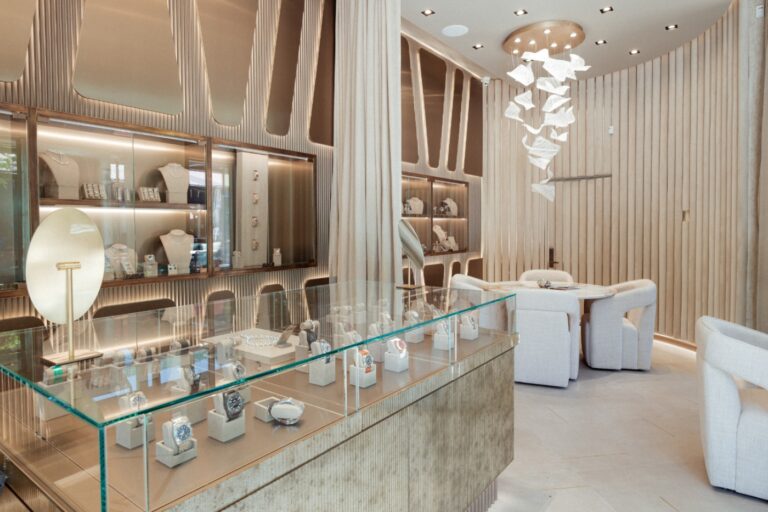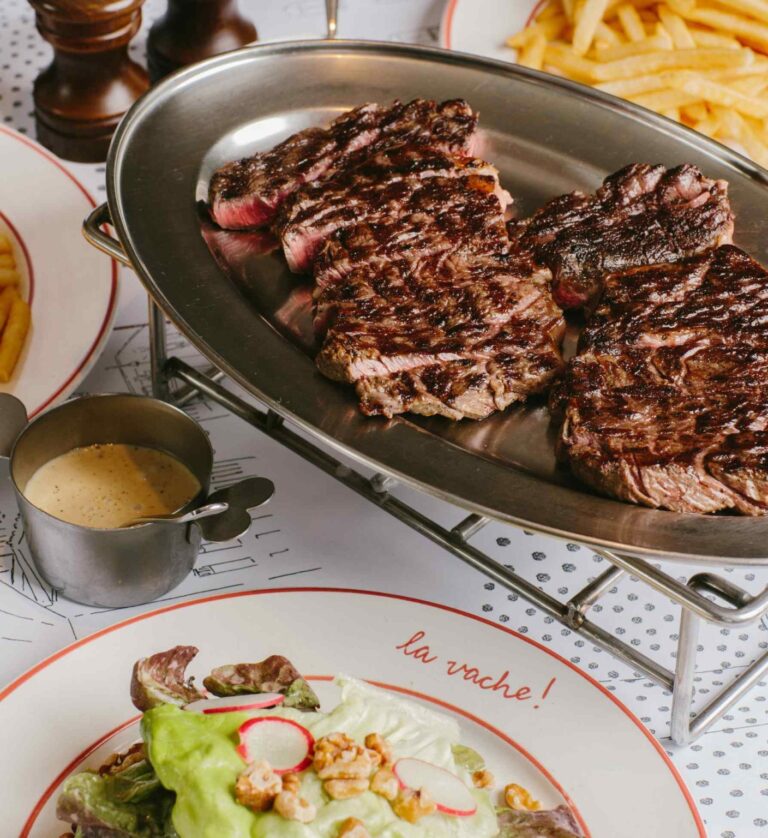Luxury Conglomerates Rethink Collaboration Strategies
Traditionally used to generate buzz by merging disparate audiences, collaborations are increasingly being used within brand families to unlock deeper synergies rooted in shared heritage and aligned values. This evolution is especially visible within groups like LVMH, Kering and Prada, where intra-group partnerships now serve not just aesthetic experimentation but long-term strategic positioning. This trend comes at a moment of broader industry recalibration. In July 2025, LVMH signalled a potential sale of Marc Jacobs, reflecting its intent to streamline its portfolio amid softer global demand and operational pressure. Finance chief Cécile Cabanis confirmed that brands no longer aligned with the group’s strategic vision would be divested — a shift that makes its focus on high-impact, in-group collaborations all the more relevant.
From the Berluti x Hublot Big Bang Unico to Gucci’s jewellery capsule with Pomellato, LUXUO looks at some of the most notable recent examples, and how they are reshaping the narrative of luxury collaboration from hype to strategy.
Gucci x Pomellato
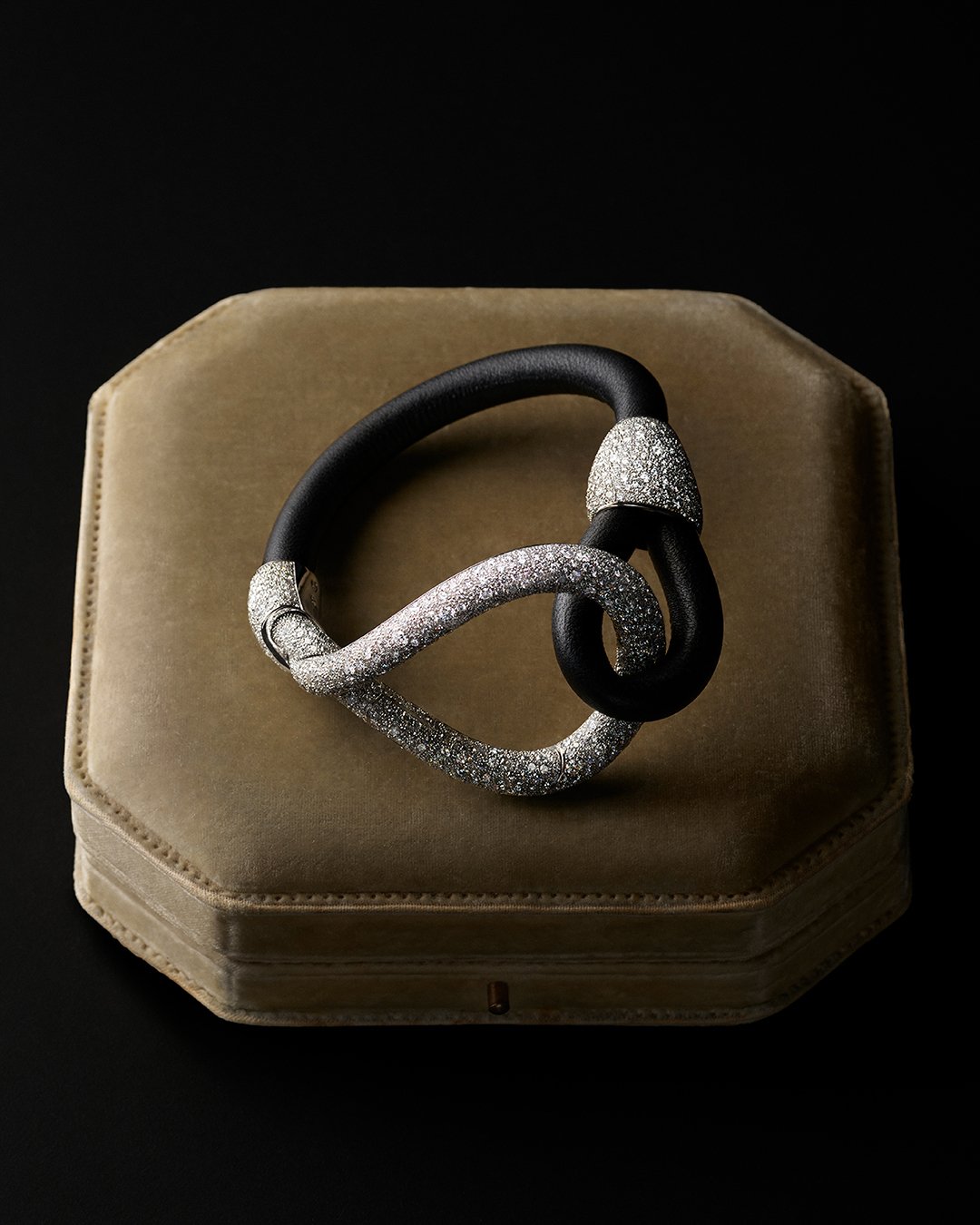
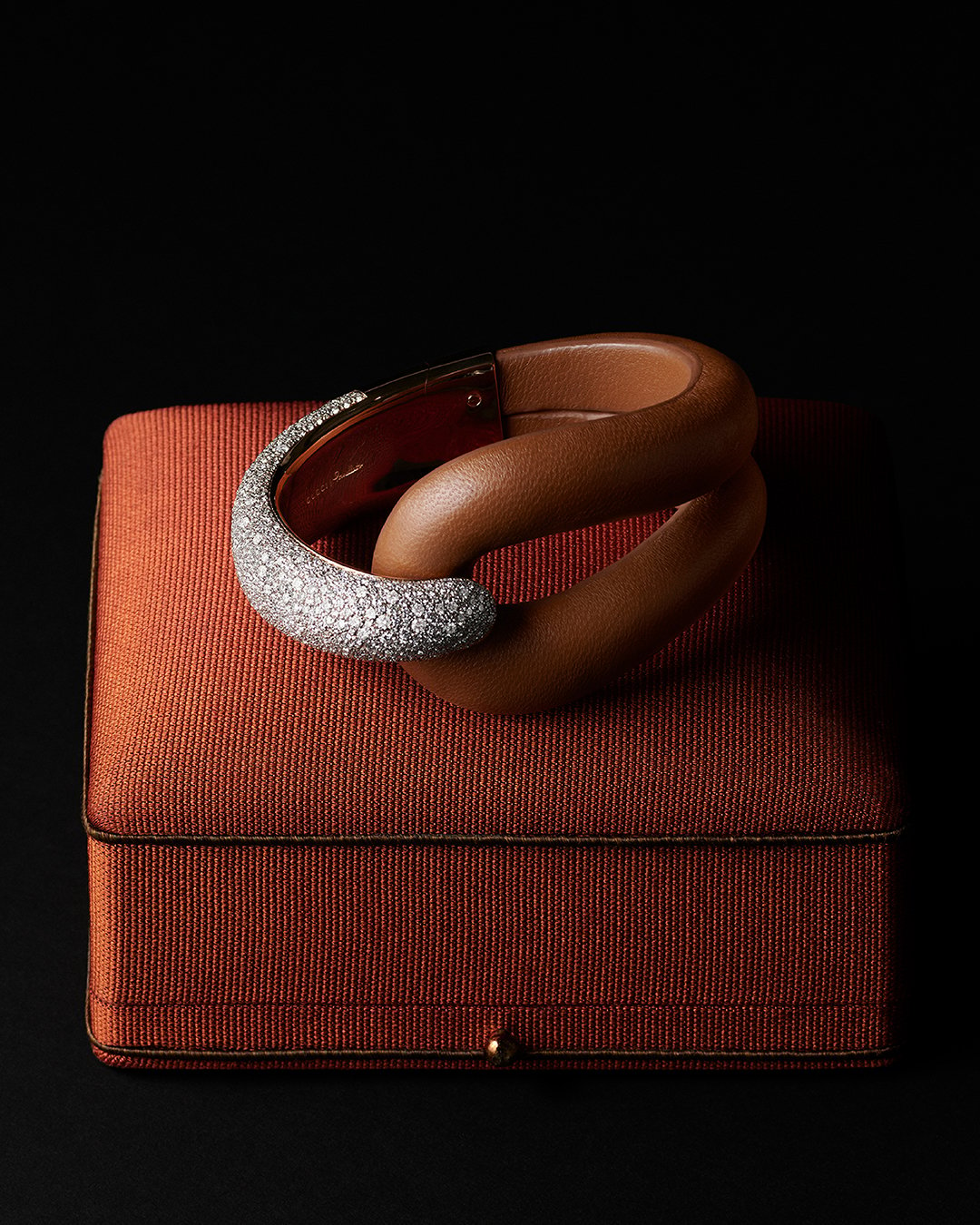
Debuted during Gucci’s Cruise 2026 show in Florence, “Monili” marks the first high jewellery collaboration between Gucci and fellow Kering brand Pomellato. The collection leverages each house’s technical strengths — Gucci’s leathercraft heritage and Pomellato’s goldsmithing and gem-setting expertise — to introduce a modern line of sculptural jewellery pieces. Referencing Pomellato’s 1984 archives, the collection includes bracelets, cuffs and minaudières that combine stitched leather with pavé-set diamonds and sculpted gold. Material contrasts — black leather against rose gold, soft curves with rigid forms — highlight a shared approach to craftsmanship.

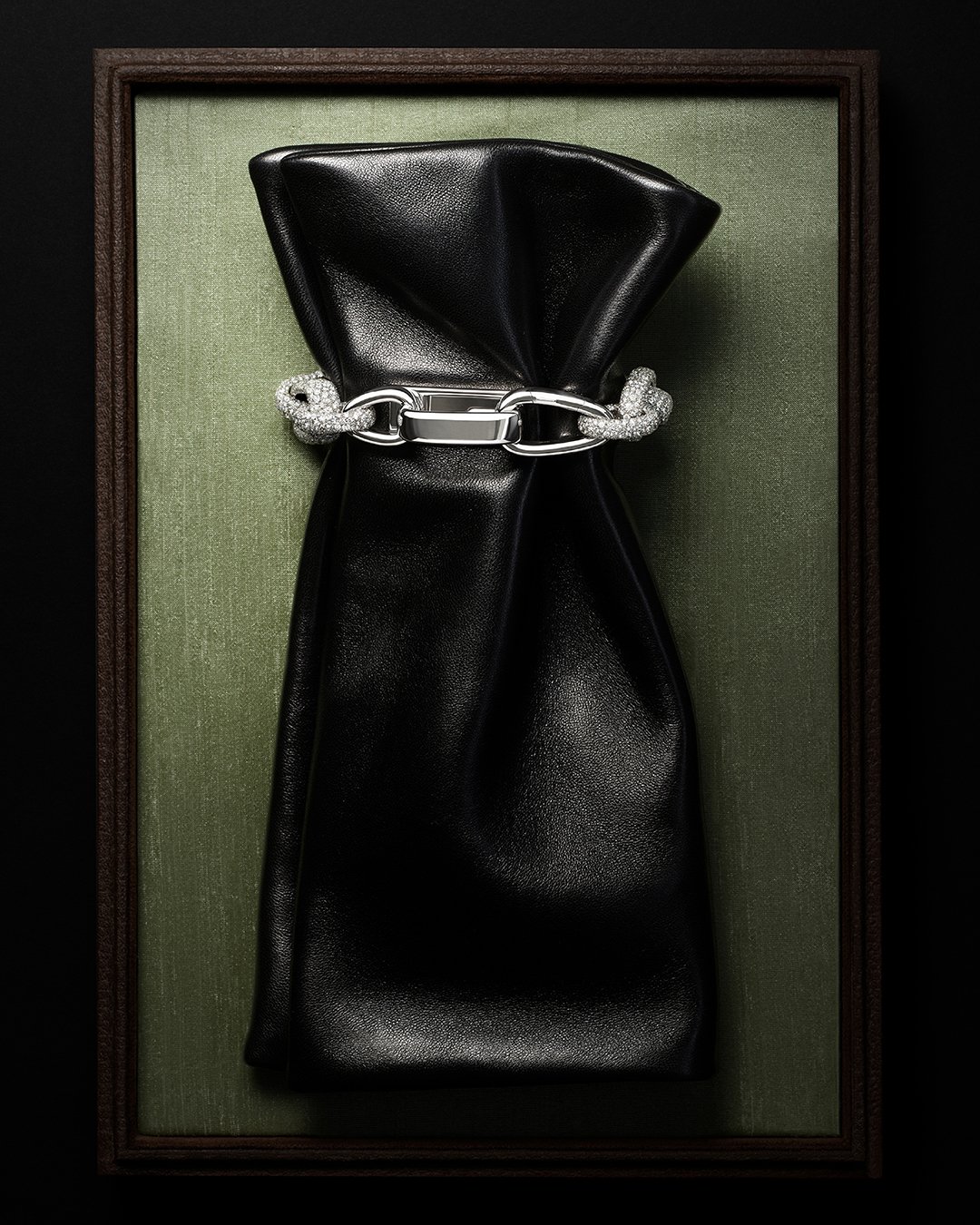
Beyond a purely aesthetic alignment, “Monili” reflects a strategic move within the Kering group to harness internal brand synergies. Under the direction of Gucci CEO Stefano Cantino and Pomellato’s sustainability-led leadership, the collaboration underscores how in-group partnerships can translate aligned values into differentiated luxury offerings. The name, Monili — Italian for “jewels”— speaks to the collection’s poetic spirit and enduring refinement. Defined by balance, contrast and intention, it embodies clarity of form and a contemporary vision of timeless design. Sculptural silhouettes and signature codes are reimagined in gold, diamonds and rich leather.
Rimowa x Fendi
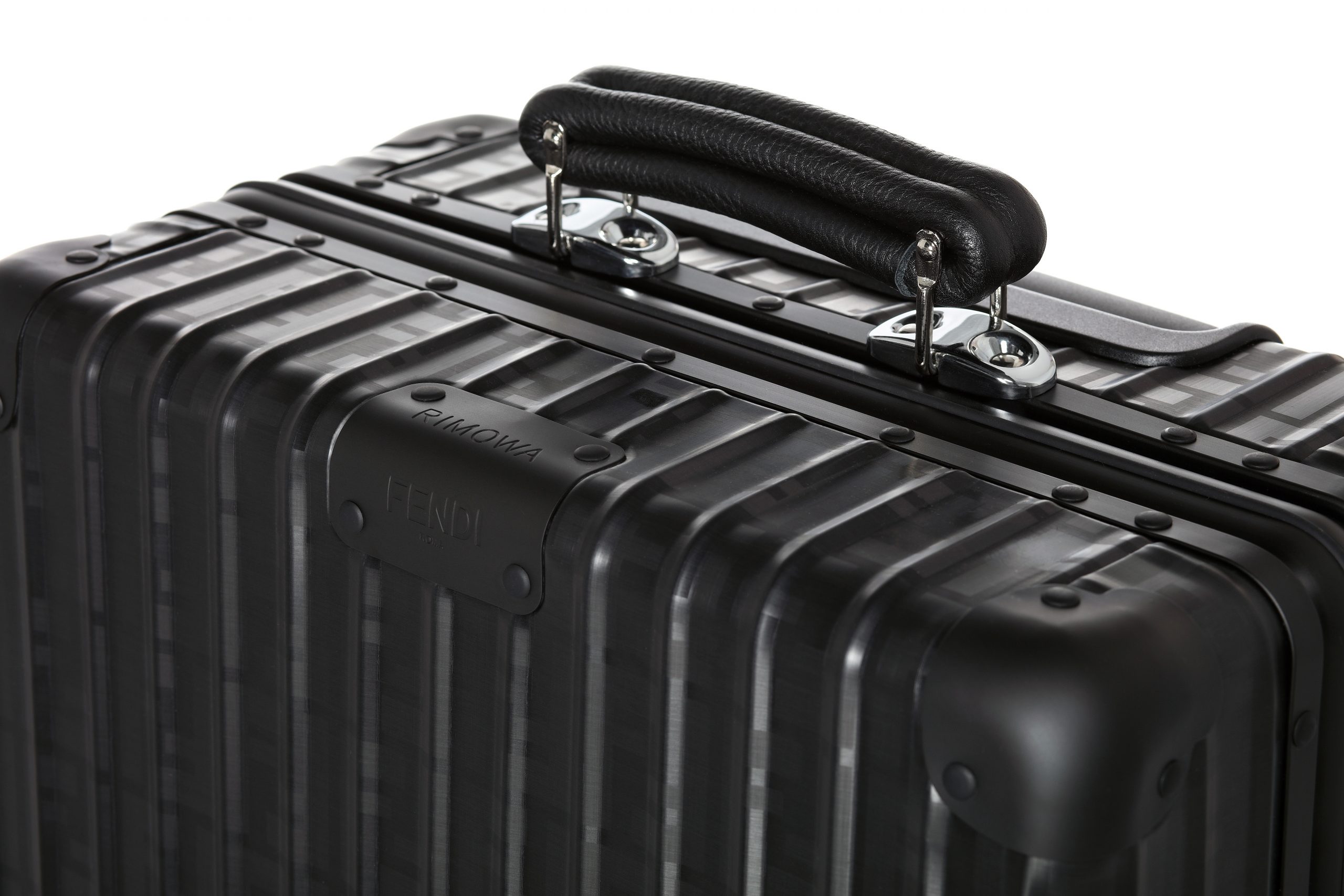
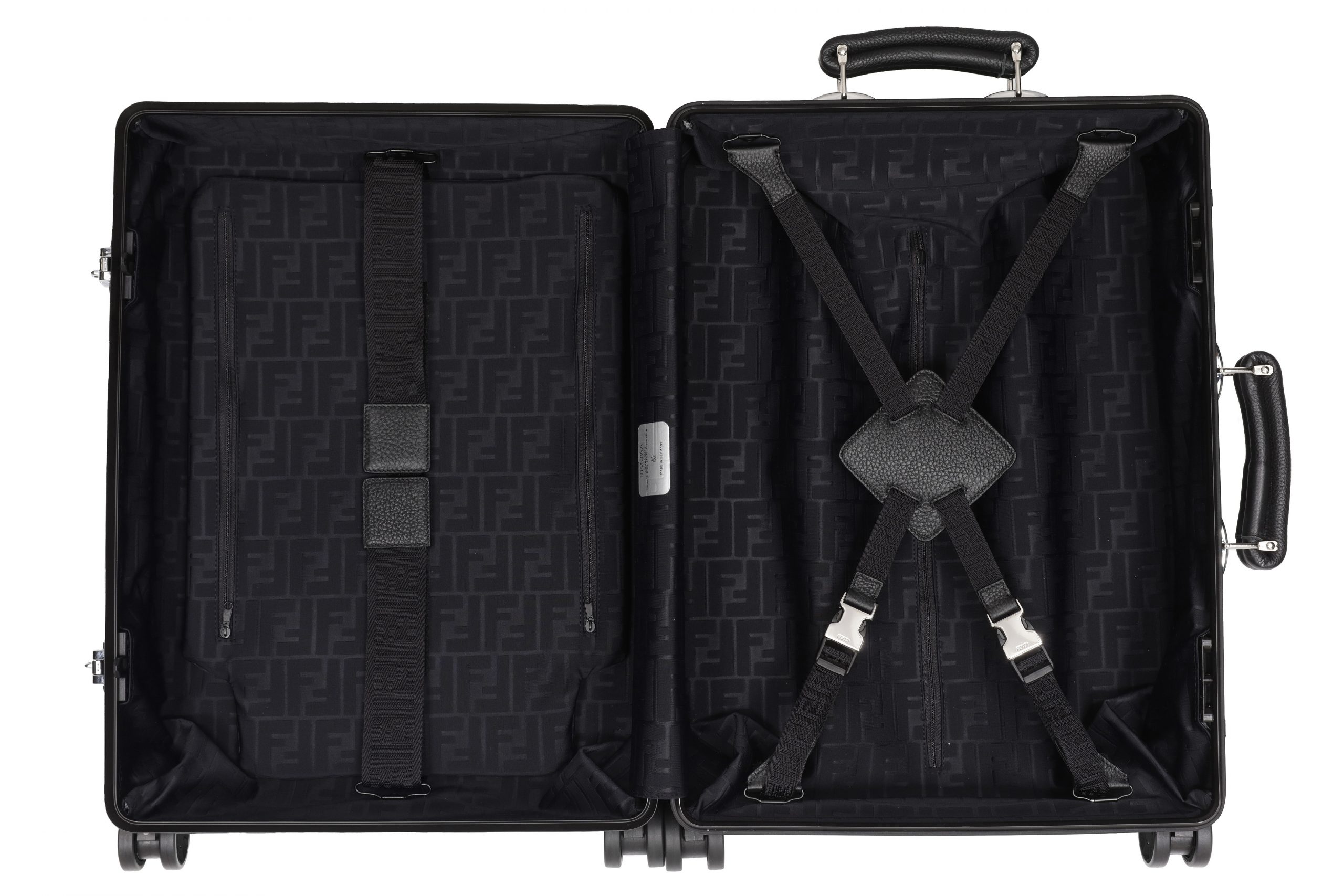
In a continued demonstration of in-group synergy, Fendi and Rimowa — two LVMH-owned brands — have reissued their collaborative cabin luggage, combining German precision engineering with Italian luxury detailing. The release reflects LVMH’s strategic use of internal partnerships to enhance product differentiation while reinforcing brand heritage. Crafted from Rimowa’s signature aluminium and made in Germany, the four-wheeled suitcase features black Cuoio Romano leather handles, a brushed FF logo exterior and a personalisable leather name tag. Inside, Fendi’s craftsmanship is expressed through FF-embossed neoprene lining and an adaptable Flex-Divider system.
While traditional collaborations often serve to merge disparate audiences, this project highlights how aligned values and technical expertise within a conglomerate can result in highly functional, collectible luxury products that resonate with core customers.
Churches x Miu Miu
A continued exploration of brand codes through strategic alignment, Miu Miu partnered with heritage shoemaker Church’s — both under the Prada Group umbrella — to introduce a co-branded footwear line that repositions traditional silhouettes for a new audience. The Church’s x Miu Miu capsule launched in avant-première on 29 August 2023 via miumiu.com. Reworking classic brogues, double monk straps and more recently, the iconic Church’s Shanghai style, the collaboration integrates formal British shoemaking with Miu Miu’s offbeat femininity. Glossed brushed leather in tobacco and black shades is complemented by sportier features — like a rubber moulded sole and a wider last — signalling both aesthetic and functional updates.
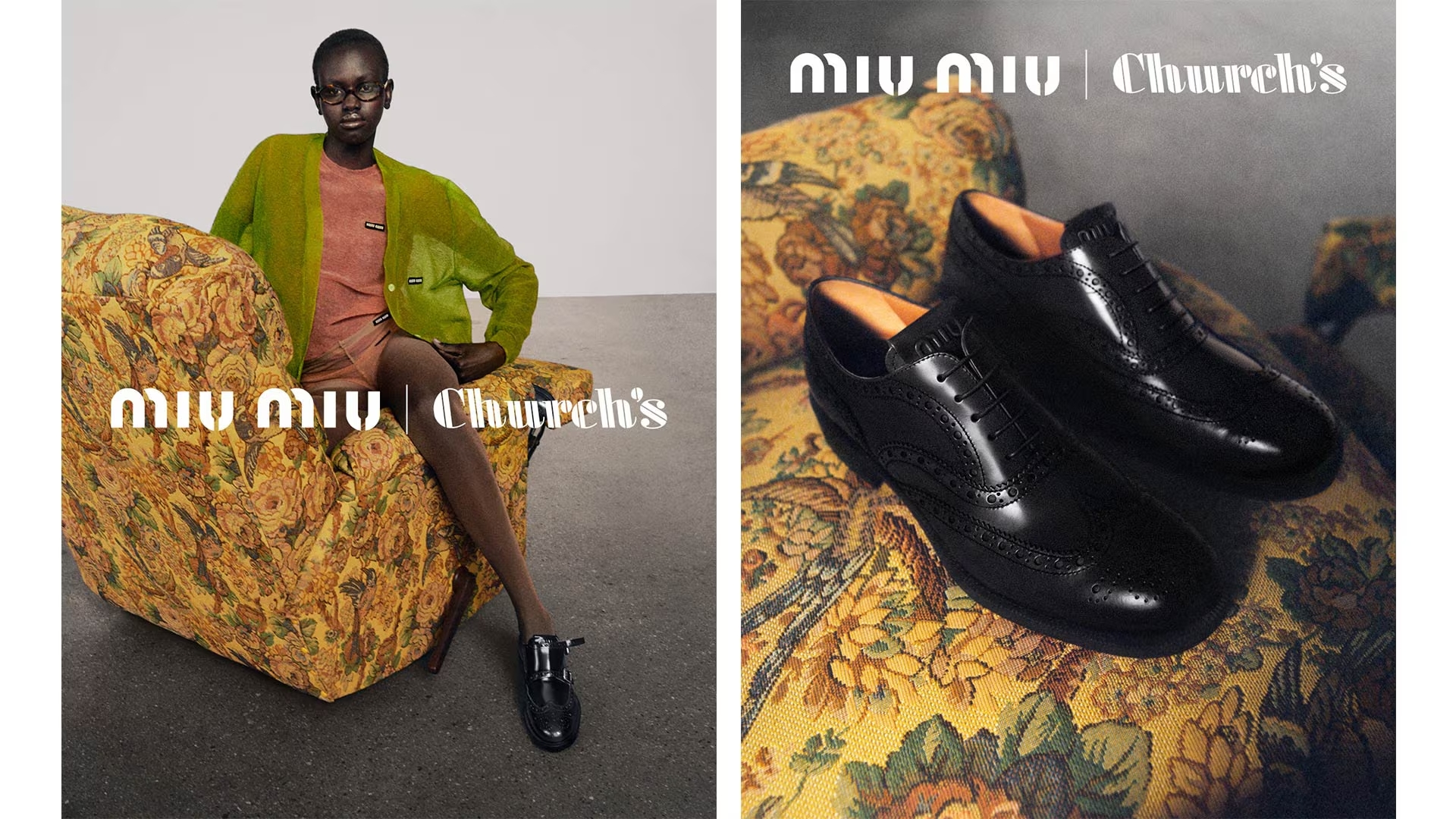
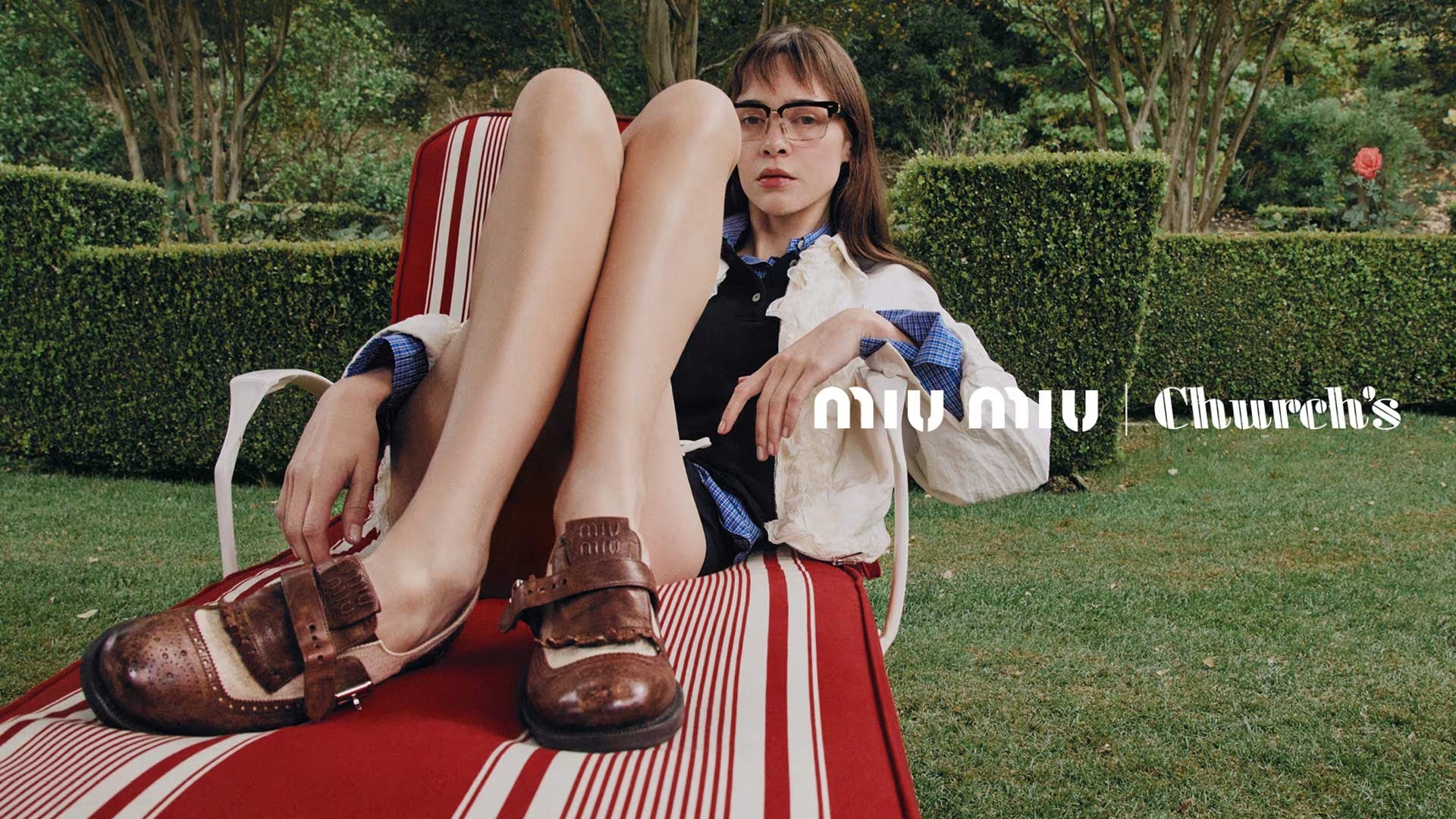
The collection is supported by image and film campaigns directed by Lengua and styled by Lotta Volkova. While the first campaign features languid, anti-formal poses atop archive Miu Miu upholstery, the second situates models within a country garden tableau, reinforcing themes of heritage juxtaposed with modern irreverence. More than a seasonal experiment, the partnership reflects a broader strategy that saw a repositioning of legacy craftsmanship for a younger demographic without compromising on either brand’s technical integrity. By embracing unconventional styling, playful set design and luxury detailing, the capsule balances commercial relevance with conceptual clarity.
Berluti x Hublot

While most cross-brand collaborations aim to merge distinct audiences, internal collaborations within luxury conglomerates can unlock deeper synergies. This is evident in the latest partnership between Berluti and Hublot — two LVMH Maisons — who unveiled the limited-edition timepiece: the Big Bang Unico Berluti Cold Brown. This marked the first time the collaboration departed from the Classic Fusion series to adopt Hublot’s flagship Big Bang Unico platform. The shift reflects a broader creative strategy to reinterpret Berluti’s heritage craftsmanship — particularly its signature Venezia leather and Cold Brown patina — within a more technically complex watchmaking context.
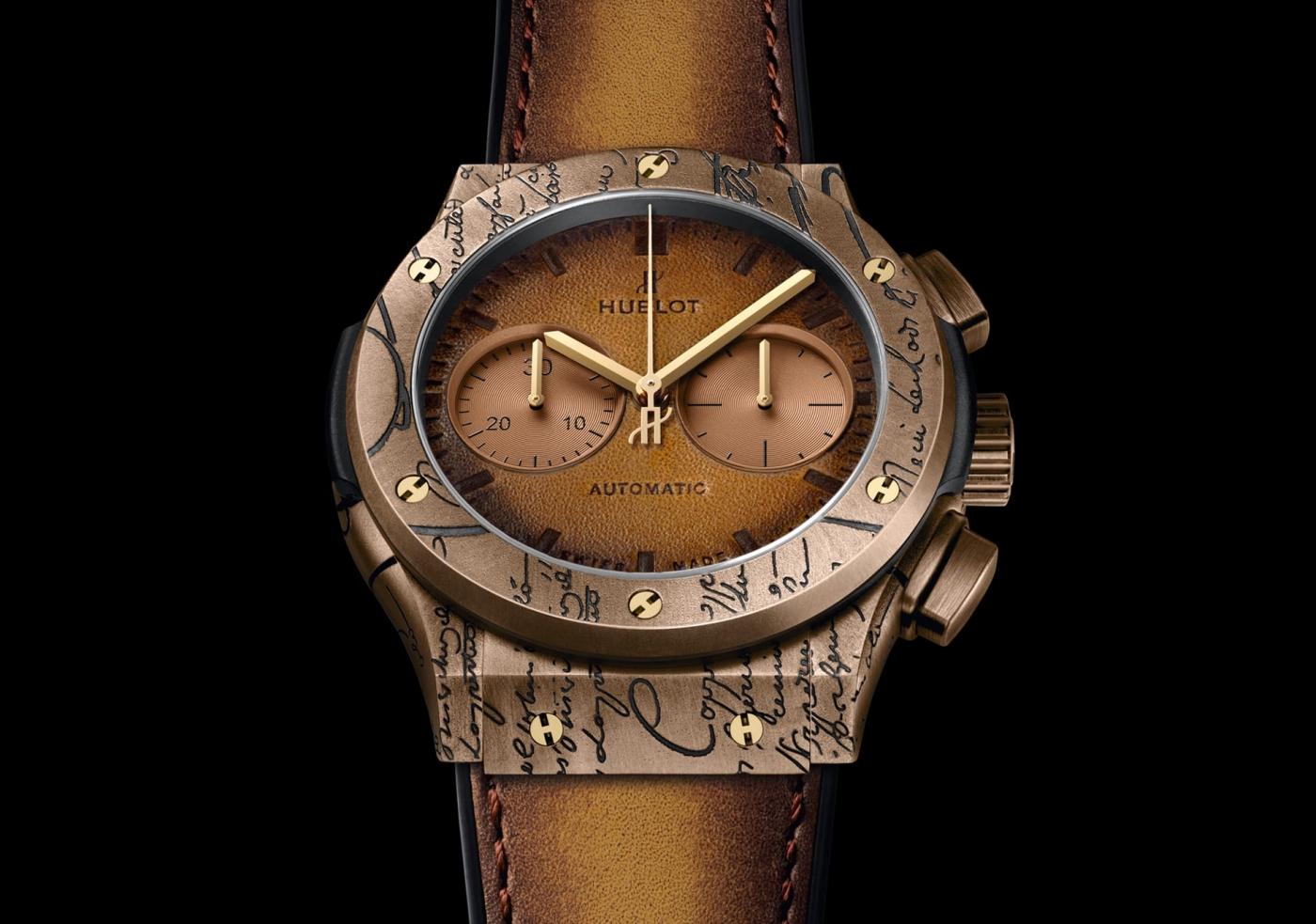
The new model introduces several innovations, such as Venezia leather in Berluti’s Cold Brown finish is applied not only to the dial and strap but also, for the first time, to the bezel, through a two-part construction combining leather and black ceramic. The dial design incorporates a layered sapphire crystal and brass to showcase the MHUB1242 Unico movement, offering a 72-hour power reserve and flyback chronograph functionality. Each watch features a unique patina, thanks to hand-finishing techniques, further enhancing its collectable value.
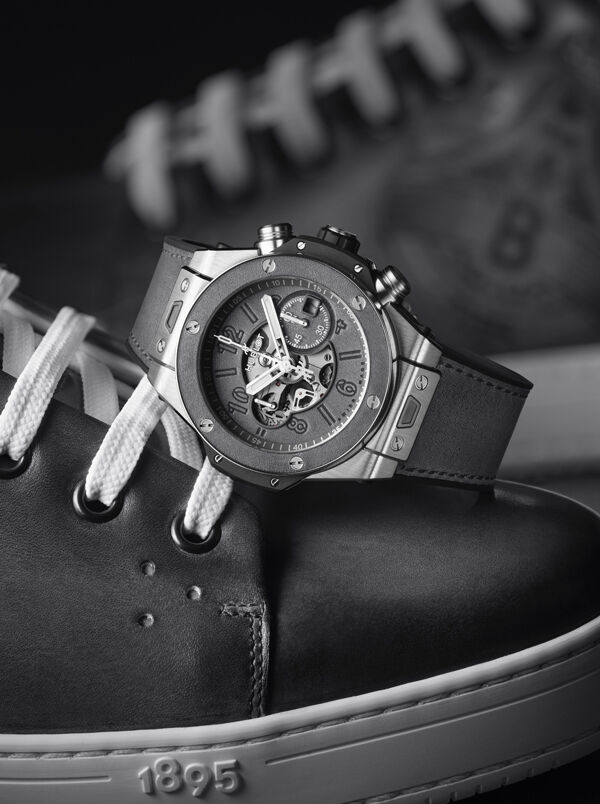
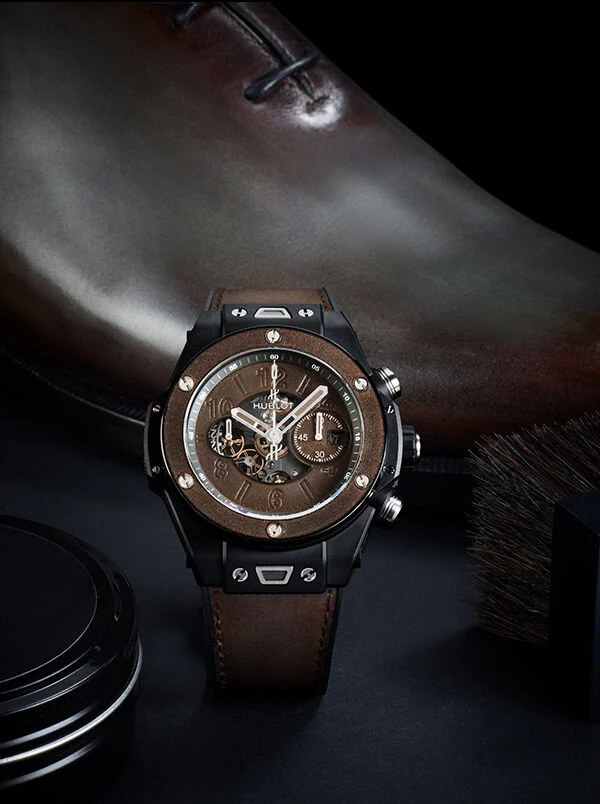
Limited to 100 pieces, the Big Bang Unico Berluti Cold Brown is delivered in a custom co-branded presentation case, complete with Berluti leather accessories. As luxury groups look inward for product differentiation, this collaboration underscores the strategic value of shared artisanal expertise — where fashion, materials science and watchmaking meet under a unified brand ecosystem.
Balenciaga x Gucci

In November 2021, Gucci and Balenciaga — two major houses under the Kering Group — launched the “Hacker Project”, a disruptive collaboration that marked a deliberate form of internal brand fusion, reflecting shared values while challenging luxury’s conventions around originality and ownership. First revealed during Gucci’s 100th anniversary “Aria” show in April 2021, the collection featured Balenciaga silhouettes overlaid with Gucci’s monograms and vice versa. Former Gucci creative director Alessandro Michele reinterpreted Demna Gvasalia’s signature styles with archival Gucci motifs, while Balenciaga’s Spring/Summer 2022 collection reciprocated by embedding its double-B branding into classic Gucci codes — including graffiti slogans like “This Is Not a Gucci Bag”, referencing Magritte’s conceptual art.
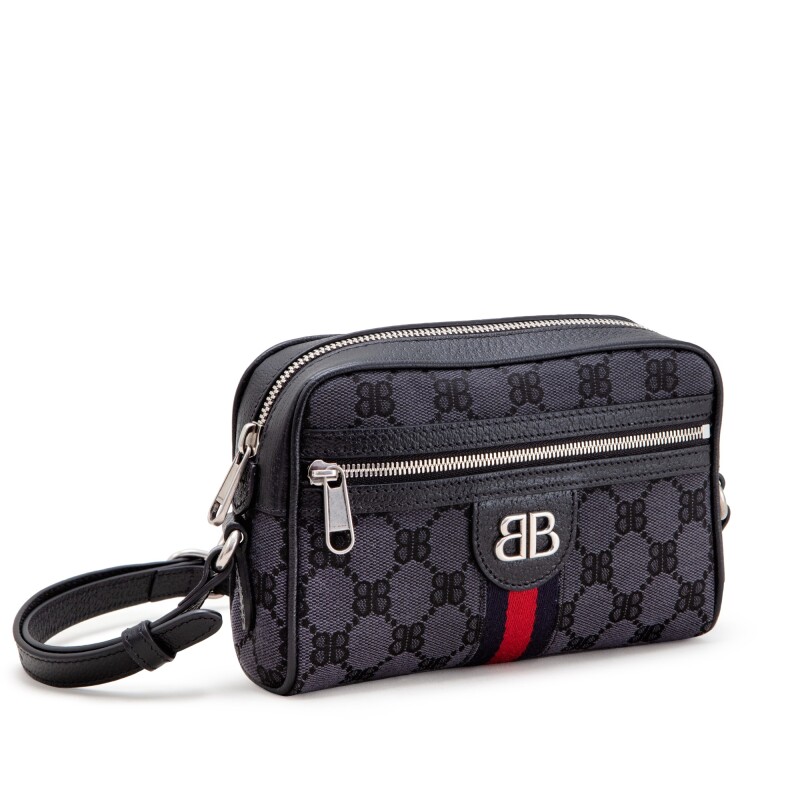
The joint launch took place on November 15, 2021, spanning 74 global retail locations with physical pop-ups and customisation experiences. In select cities, artists were on-site to personalise items, adding a layer of individualised branding to the already hybridised products. Products from the project, including co-branded versions of the Hourglass bag, Triple S sneakers, Jackie 1961 hobo and accessories like the BB belt, reflected a crossover of each house’s most recognisable elements. The approach strategically leveraged internal group synergies to provoke dialogue around authenticity and the evolving role of fashion branding in the age of digital hype and cultural remix. By merging creative direction across two of Kering’s flagship brands, the Hacker Project demonstrated how luxury conglomerates can leverage intra-group dynamics not just for visibility, but for cultural impact.
Tiffany & Co. & RIMOWA
In September 2023, luxury travel and jewellery powerhouses RIMOWA and Tiffany & Co. unveiled a limited-edition capsule collection. Announced ahead of its debut on 26 September at Tiffany’s OMA-designed flagship, The Landmark in New York City, the collaboration consists of three custom designs that highlight the distinct identities of both brands. These include a jewellery case — marking a first for RIMOWA — crafted in grooved aluminium with Tiffany Blue accents and a removable sterling silver nameplate; a smaller personal case in Tiffany Blue polycarbonate with leather detailing and the Rock Cut Cabin case, distinguished by a new brushing technique that mimics the facets of a diamond.
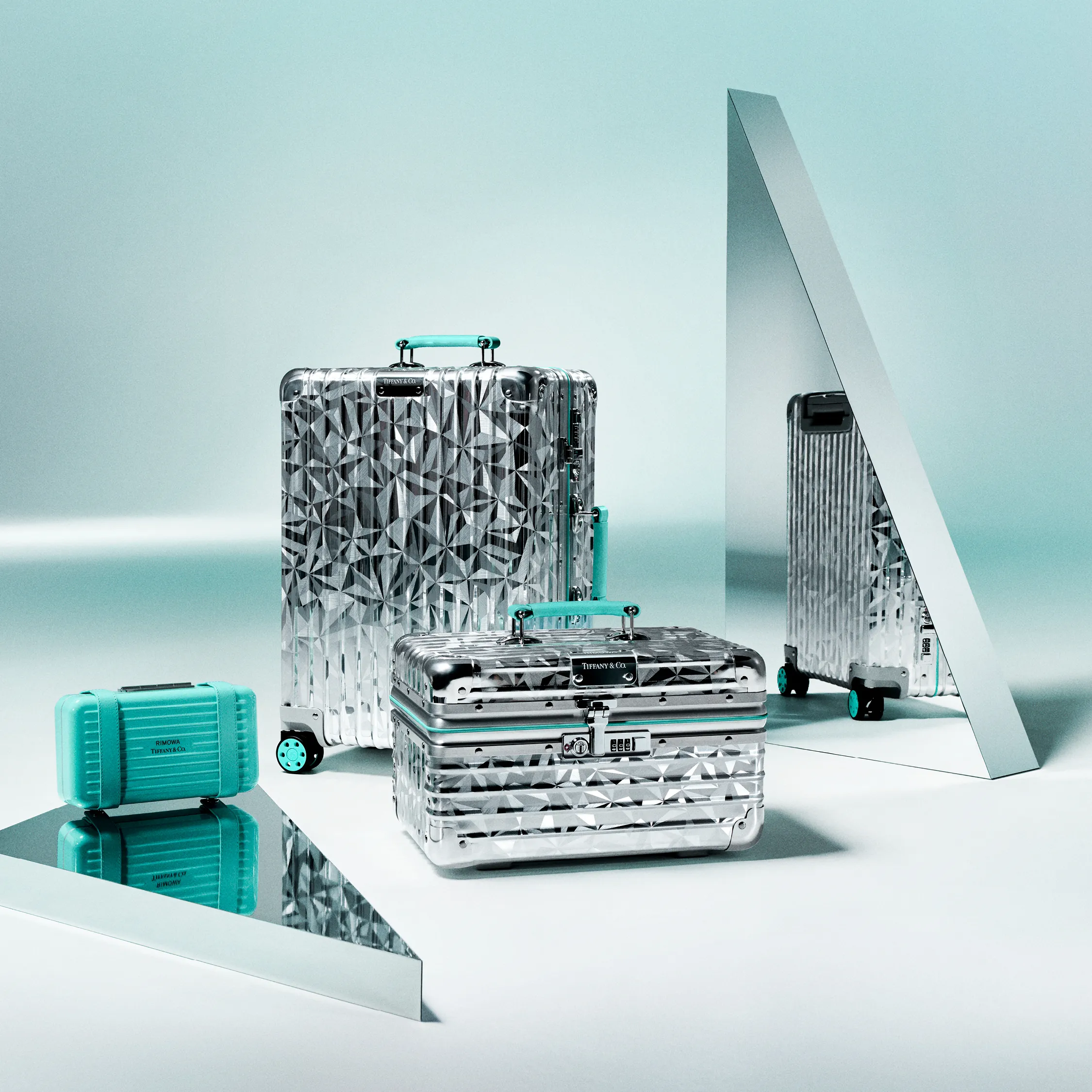
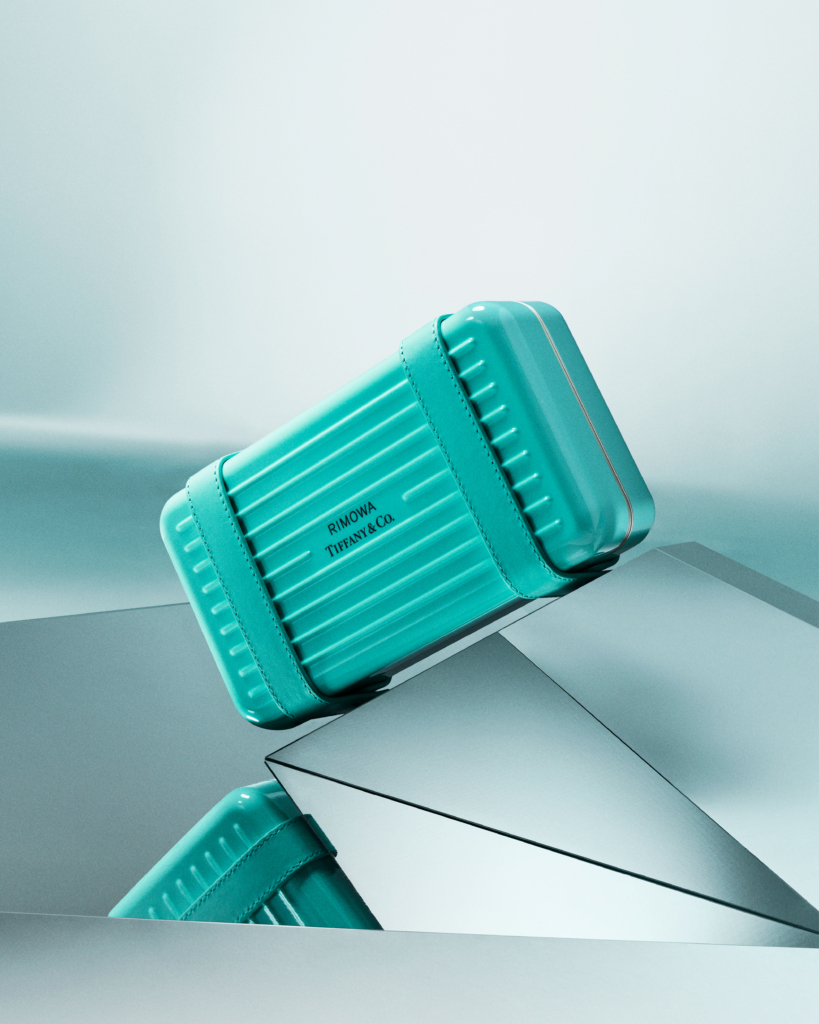
Celebrating RIMOWA’s 125th anniversary and Tiffany & Co.’s enduring legacy in jewellery design, the collaboration centres on a design language inspired by diamond cuts and precision metalwork. The result is a collection that serves both aesthetic and functional value, targeting luxury travellers, collectors and brand loyalists across both sectors.
Kering Beauté x Bottega Veneta
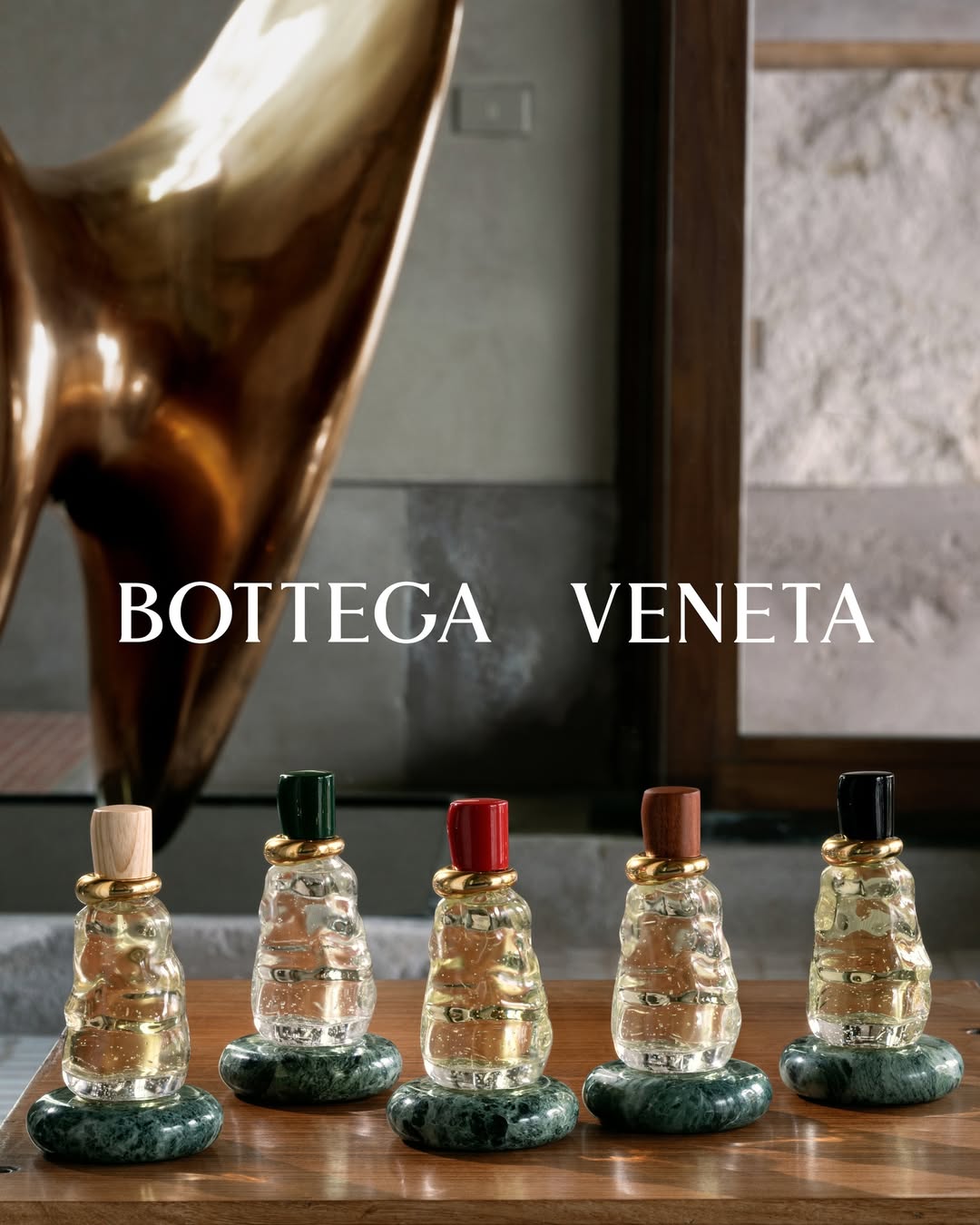
In October 2024, Kering Beauté marked a major milestone with the launch of Bottega Veneta’s high perfumery collection — its first internally developed fragrance line following the creation of the beauty division in 2023. The collaboration represents a strategic shift for the Kering Group, aligning fragrance development more closely with the fashion houses under its ownership and reducing reliance on licensing models. Under the fomer creative direction of Matthieu Blazy, the collection comprises five perfumes designed to reflect Bottega Veneta’s brand identity — defined by a minimalist aesthetic and emphasis on texture — while drawing from the house’s Venetian roots. Conceptually rooted in the city’s role as a historical trading nexus, each scent combines natural ingredients sourced globally, reinforcing the brand’s refined and cosmopolitan positioning.
This release is significant not only as Bottega Veneta’s first in-house fragrance launch, but also as the debut product from Kering Beauté since the division was established. Kering Beauté was formed to unlock the long-term potential of the Group’s fashion and jewellery brands — including Balenciaga, Alexander McQueen, Pomellato and Qeelin — within the beauty sector. The new structure gives Kering direct oversight of product development and brand messaging across categories. The launch also follows Kering Beauté’s 2023 acquisition of heritage fragrance house Creed, further signalling Kering’s long-term ambitions in the high-end fragrance market. While existing licensing agreements for brands like Gucci and YSL remain in place, the Group’s move into in-house development underscores a deliberate strategy to consolidate brand equity across fashion and beauty under one roof.
Fendi x Tiffany & Co.

In 2023, Fendi and Tiffany & Co. unveiled a high-profile collaboration that resulted in a limited-edition series of Tiffany Baguette bags. At the centre of this partnership was a handcrafted sterling silver Fendi Baguette, produced over four months by artisans at Tiffany’s Rhode Island hollowware workshop. Part of Fendi’s “hand in hand” initiative, the piece marks the first time the programme has extended beyond Italy, blending Tiffany’s heritage in silversmithing with Fendi’s legacy in leather goods. In addition to the silver edition, the brands released a capsule line of Tiffany Baguette bags in Tiffany Blue leather, shiny crocodile and silk. This cross-sector collaboration between a fashion house and a heritage jeweller reflects a broader industry shift toward craftsmanship-led luxury and brand synergy with tangible, collectible outcomes.
For more on the latest in luxury fashion and style reads, click here.
The post Luxury Conglomerates Rethink Collaboration Strategies appeared first on LUXUO.



